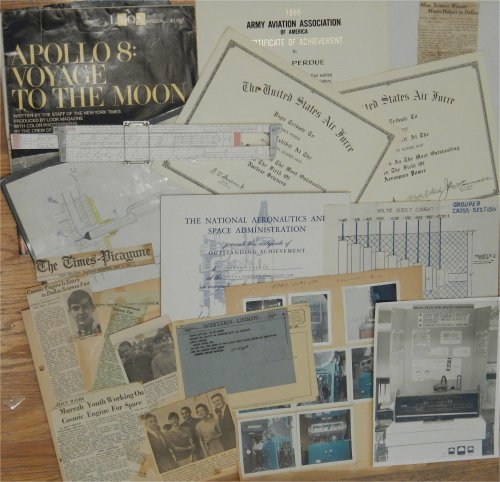How Nikola Tesla & A Butter Knife Turned Me Into A Rocket Scientist
NEW!
The Kindle edition of my Cold War thriller, The Tesla Bequest, was published today. Click here for more.

This collage illustrates my ion rocket engine and particle accelerator that used the solar flux for space propulsion. Photos from 1966.
(Click image to enlarge … and click that large one to make it even bigger)
Nikola Tesla turned me into a rocket scientist. Or it might have been a butter knife that did it.
I think both.
IN THE BEGINNING WAS THE BUTTER KNIFE
The butter knife came first, but I don’t remember any of it.
However, the story as widely repeated in the family, has me as a very young child exploring my world with a silver-bladed, pearl-handled butter knife at my grandmother’s house in Itta Bena, in the Mississippi Delta. Since I was up and walking at 8 months, it was hard to keep an eye on me.
So, it wasn’t much of a surprise that while the adults lingered at the dining room table, I wandered off. Not to be heard of until the lights went out. Right after I stuck the butter knife in the electrical socket.
I am told I was found a good distance away from the charred socket, still holding on to the blackened remains of the butter knife. Much of the blade had melted. The insulated mother-of-pearl handle was credited with offering up an enthusiastic but less-than-lethal jolt.
From that point on, I got blamed for most local electrical disturbances.
And many of them were, indeed, my fault. And Nikola Tesla’s for inspiring a series of high-voltage, extreme weird science experiments that culminated in a”cosmic engine” (see collage) that demonstrated the use of the solar flux for space propulsion and won a ton of prizes, awards and scholarships from NASA, the Air Force and others.
THE TESLA INSPIRATION
As hard as my parents tried to keep me away from electricity, it was impossible. Not long after the butter knife came Christmas. Like most kids, the tree lights fascinated me. I do remember wondering why they went on and off. So I unscrewed one. It went out. Didn’t seem to be anything in the socket. So I stuck my finger in.
The tree lights went out. My lights went on.
As I got older, I kept at electrical things. Rewired flashlights. Learned where not to stick my fingers. Took radios apart (this was the vacuum tube era). Then I built radios. Got fascinated at how various tubes glowed in different ways.
And while shortwave and Ham radio were the Internet of the 1950s and 60s, I was more interested in the electricity in the machine than the communication the electrons produced.
So, while using the Google of the late 1950s (called a library) to research the funny ways vacuum tubes glowed, I stumbled across instructions on how to make a Tesla coil.
HOW I ACCIDENTALLY INVENTED THE HAARP PROGRAM.
I also stumbled into the Nikola Tesla rabbit hole and followed the other-worldly tunnels into a fascination, a compulsion, and a motivation to study the science of high energy physics.
That prompted me to build things that sparked, arced, shorted out entire neighborhoods, blanked out a television broadcast station, scrambled Air Force jets who thought they were chasing Russian missiles or bombers.
And won prizes at the 1966 international science fair and achieved a degree of scientific acclaim.
Then I wrote a “what-if?” Tesla/Cold War thriller — The Tesla Bequest — that was first published by Pinnacle Books in 1984 and inadvertently invented the HAARP project and launched a million conspiracy theories.
Life’s not been the same. Thank you Nikola.
SEE ALSO:
-
My Tesla Evolution 1: Coil, Laser, Ion Rocket
-
My Tesla Evolution 2: Ion Engine + Atom Smasher = Cosmic Engine

